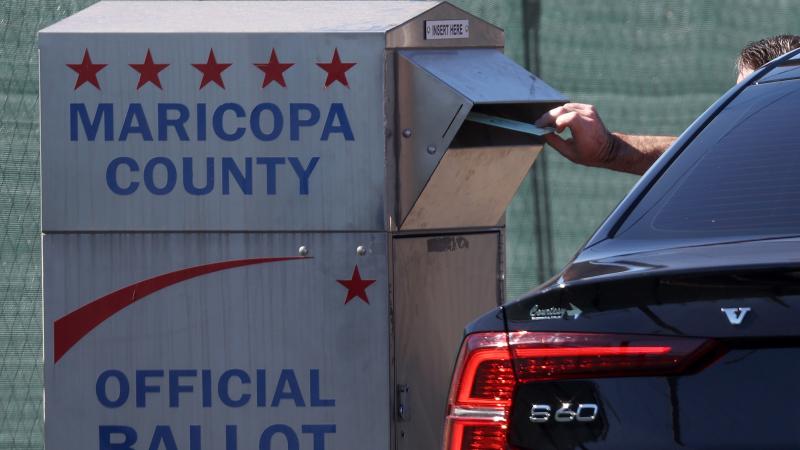Amid claims of unexplained ballots, Pennsylvania officials unsure how many voted in 2020
Several counties have not uploaded full "voter histories," said a spokesperson.
The state of Pennsylvania is still uncertain just how many residents voted in the 2020 election, a state official revealed this week, amid allegations of discrepancies between ballots and voter rolls in the battleground state.
Pennsylvania was thrown back into the limelight this week when a group of Republican state representatives claimed to have found "troubling discrepancies between the numbers of total votes counted and total number of voters who voted" in the state last month.
"A comparison of official county election results to the total number of voters who voted on November 3, 2020 as recorded by the Department of State shows that 6,962,607 total ballots were reported as being cast," a press release announcing the findings said, "while DoS/SURE system records indicate that only 6,760,230 total voters actually voted."
SURE is Pennsylvania's Statewide Uniform Registry of Electors, the state's voter registration database. That databank is run by the state's Bureau of Election Security and Technology, itself administered by the Department of State.
The Pennsylvania State Department strongly disputed the representatives' allegations of mismatched vote totals, with spokeswoman Wanda Murren calling it "uninformed, lay analysis combined with a basic lack of election administration knowledge."
"This obvious misinformation put forth by [the representatives] is the hallmark of so many of the claims made about this year's presidential election," Murren continued, calling the allegations "wholly without basis."
Voter histories still incomplete for 2020
Multiple representatives who signed onto the analysis would not comment on its conclusions, pointing Just the News toward Rep. Frank Ryan, who appeared to have spearheaded the initiative. Ryan did not respond to multiple requests for comment.
But Murren in her statement and in interviews with Just the News revealed that, even as the year comes to a close nearly two months after the election itself, the state is still ultimately not in possession of the exact number of voters who cast a ballot in Pennsylvania this year.
In her statement disputing the findings of Ryan and the other representatives, Murren said: "We are unclear as to what data the legislators used for this most recent 'analysis'. But the only way to determine the number of voters who voted in November from the SURE system is through the vote histories."
"At this time," she continued, "there are still a few counties that have not completed uploading their vote histories to the SURE system. These counties, which include Philadelphia, Allegheny, Butler and Cambria, would account for a significant number of voters."
In email and phone interviews with Just the News, Murren confirmed that voting histories "are each tied to an individual voter" and that those histories are "the only way to determine exactly how many voters voted in the election."
Asked to clarify how the Department of State certified the election without apparently knowing how many voters ultimately voted in the election, Murren replied: "Each county certifies the vote totals for each individual candidate. The secretary's certification is based on the certifications from each county. In Pennsylvania, it is the counties that are authorized to administer all aspects of elections — from voter registration to canvassing the ballots."
Murren pointed to the Department of State's website, which lists just under seven million ballots cast in the election this year.
That figure is reflective of "the number of votes cast for each candidate," she said. "Those numbers come from the scanners. And those scanners are totally anonymous. It's just the votes cast for individual candidates."
"What the counties are doing now," she continued, "is strictly administrative. They are now going back and telling our database which voters voted."
"We don't know which candidates they voted for," she added of the administrative lists, as "those counts are already established" in the scanner tallies.
The number of ballots cast is not necessarily going to match up exactly with the number of all the voters who voted, Murren said. Still, the number of ballots on the state's website should be considered a rough estimate of the number of people who voted, she said.
"We have to keep in mind those people whose ballots were cast and not counted," she added. "That's going to be one of the differences. And there are people who cast a ballot and don't vote—not a lot, but it happens."
"This is not uncommon," she said of the delay, "and especially with the volume of ballots we had this year."
Pennsylvania has been at the center of much of the controversy since last month's election. The state was named, along with three others, in a major litigation effort by Texas and 18 other states earlier this month to delay the certification of the 2020 election results pending investigations into alleged voting irregularities there.
The state was also the site for what the Trump campaign legal team argued was a two-tiered voting system leading up to the election, with multiple counties adopting last-minute rule changes to ballot curing procedures and numerous other counties declining to change those rules prior to Nov. 3.
The state also weathered multiple accusations that election watchers and poll workers were stymied from properly surveying ballot-counting procedures and other election work.
Two of the localities Murren said have not yet submitted their voter histories — Philadelphia and Allegheny — are reliable Democratic strongholds. Philadelphia has reliably voted Democratic in presidential elections for decades, with the city itself voting 81% in favor of Joe Biden this year.















